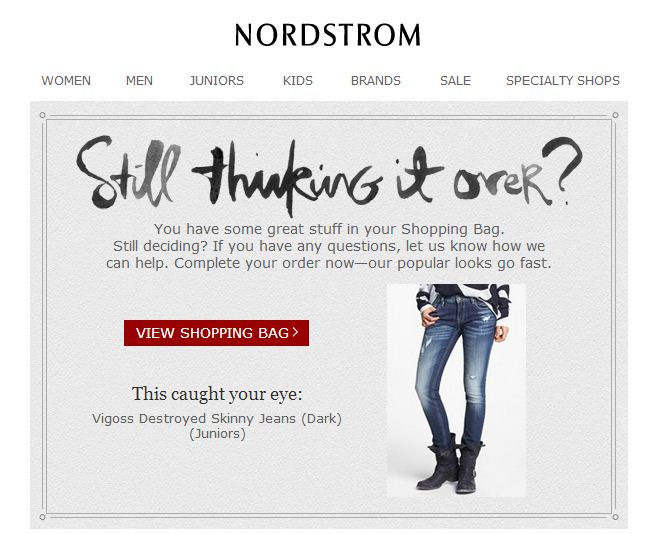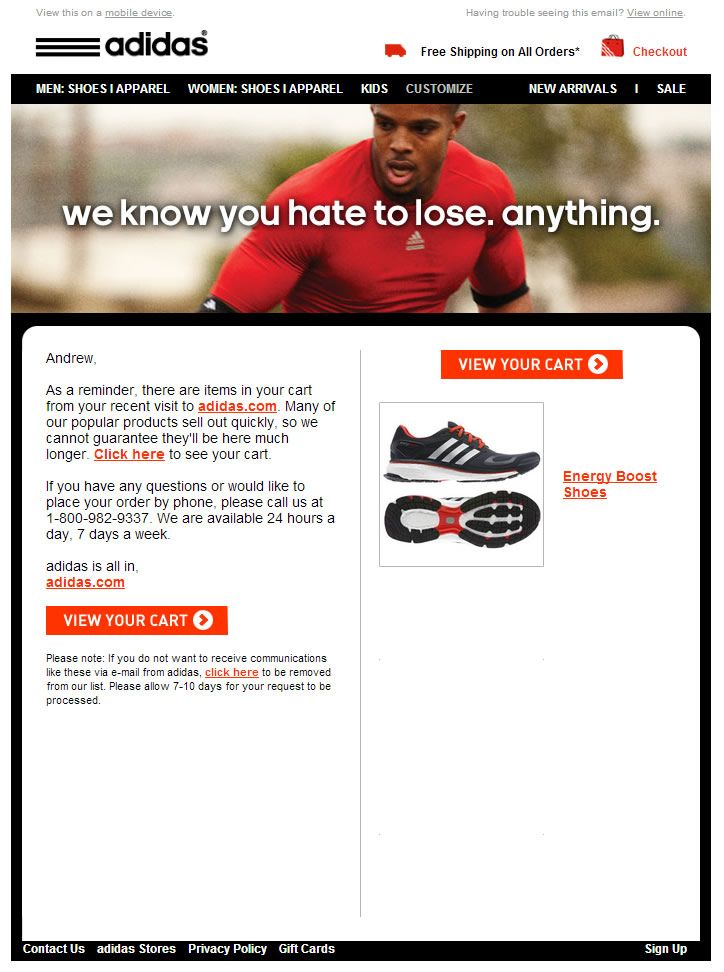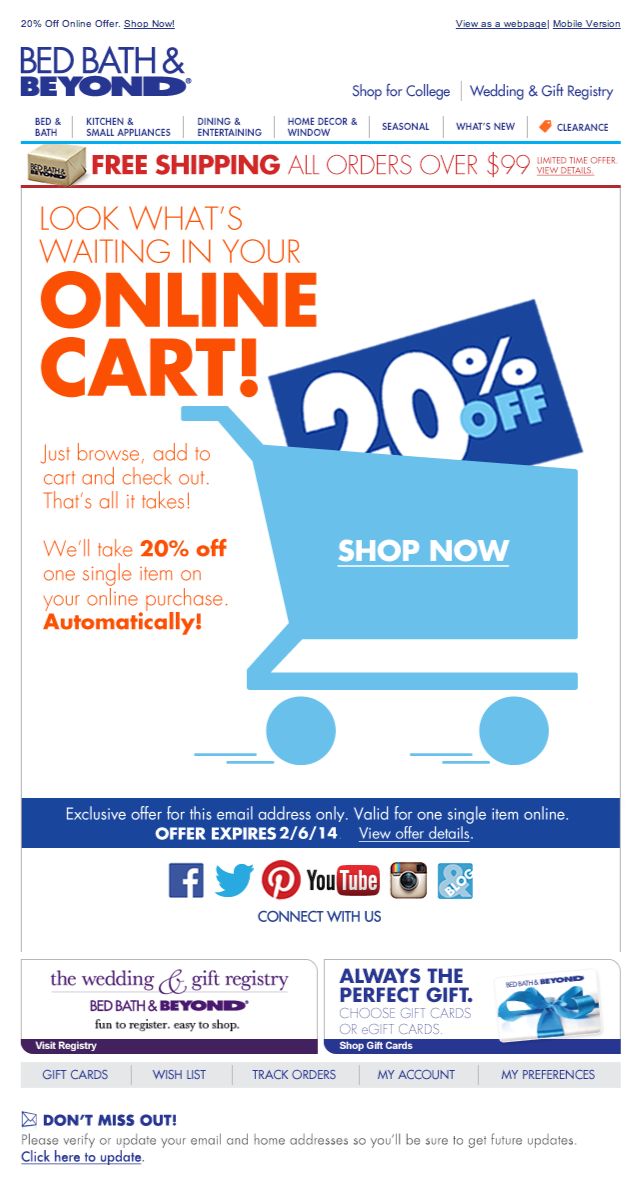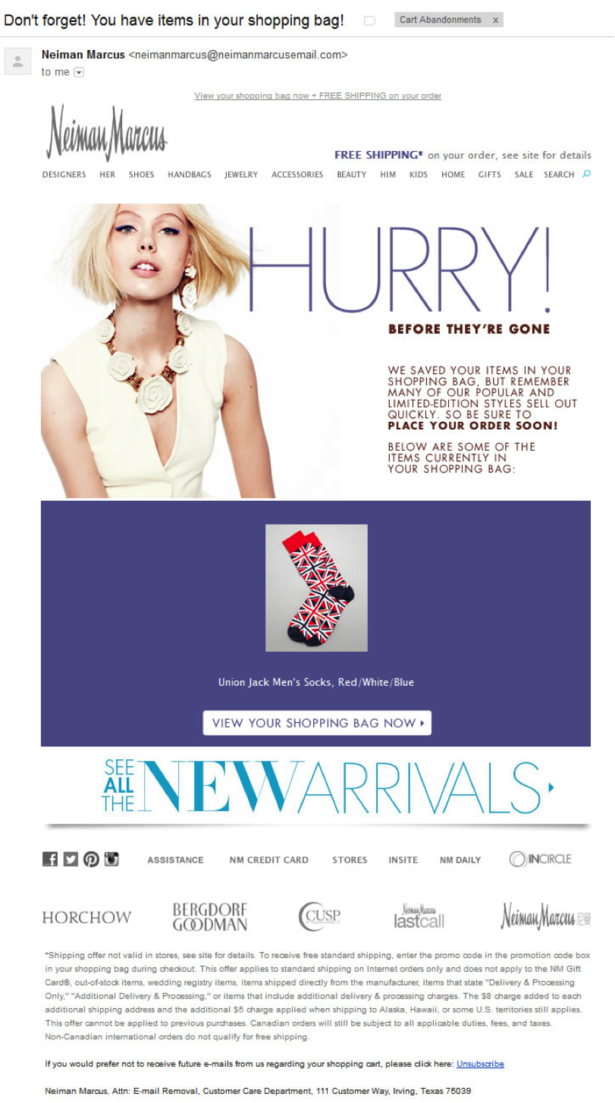10 tips for creating an effective abandoned cart recovery email programme.
The e-commerce market in Spain continues to grow, and is already the 5th European country with the highest turnover according to data from the European association that represents the sector, Ecommerce Europe. In fact, in southern Europe, Spain leads e-commerce with 14,414 million euros.
These good figures conceal a reality that e-commerce managers know all too well: the high shopping cart abandonment rate in e-commerce. According to the source, this index lies in a range from 55% to 80,30%.
As a result, one of the main concerns of e-commerce managers is to develop the most effective abandoned cart recovery programmes possible. This is because a good programme can recover between 15% and 25% of abandoned trolleys.. In the following lines we present 10 tips for creating an effective abandoned cart recovery programme.
1. Send email at the right time(s). A series of emails can be sent to recover an abandoned cart, or a single email can be sent, or even a combination of email and telephone... but in any case, we should consider two important aspects. Firstly, let's keep in mind that send first email in real time or within 30 minutes of abandonmentThe first step is to ensure with a high degree of probability that the user will be "online". Secondly, we must take into account the presence, in the user's memory, of the context to which the retrieval email will allude. That is to say, if we take too long to send the email, it is likely that the user will not contextualise it because they have forgotten their original intention to buy.. In this sense, if we decide to send a series of two recovery emails, the second one can be sent within 24 hours after the abandonment.

2. Focus communication on service rather than sales.. The timing and underlying intention of such mailings suggest a markedly service approach to content and form. It is necessary to avoid being commercially "pushy" and emphasise a service-oriented approach and interest in the user-initiated process..
3. Capture the email address at the initial stage of the purchase process.. In many cases, one of the problems with the check-out process in e-commerce is that the e-mail is requested in the last steps. Requesting the email at the beginning will guarantee the possibility of being able to do good remarketing via email.
4. Clear and defined calls to action. Let's keep in mind the importance of the action that these types of emails seek to trigger. Thus, buttons such as "complete your order" or "continue shopping" should be highlighted.

5. Test the issues. As with any other type of email, testing different subject lines will help us to determine which of them not only generates a higher open rate, but also increases conversions and orders.
6. Conveys security and confidence. It is likely that some of the reasons why the user decides not to finalise the purchase process have to do with insecurities about the terms and conditions of the transaction, the security of the process or the configuration of the final costs. In this respect, adding links to terms and conditions or including a telephone number or email address for support will help to increase the level of security and confidence in the user..
7. Incentivise buying. If after the first one or two recovery mailings we do not achieve conversion, it may make sense to incorporate an incentive as a last resort. In this case, it is always advisable to test which incentive converts more than others, for example, savings on shipping costs versus a 10% discount.
 8. Linked to the previous tip, we must take into account the effect of incentivising completion of the purchase in the first recovery email. We are referring to users "detecting" this mechanic and abandoning carts in order to benefit from the subsequent incentive. The important thing is to test and determine if this situation occurs or if, on the contrary, it does not affect the number of abandoned carts.
8. Linked to the previous tip, we must take into account the effect of incentivising completion of the purchase in the first recovery email. We are referring to users "detecting" this mechanic and abandoning carts in order to benefit from the subsequent incentive. The important thing is to test and determine if this situation occurs or if, on the contrary, it does not affect the number of abandoned carts.
9. Play on the sense of urgency.. Conveying a sense of urgency can help the undecided to buy. You can convey this feeling by indicating, for example, that the stock of products in the cart is limited, or that the incentive (e.g. free shipping) will only be available if the transaction takes place within the next 24-48 hours.

10. Personalise. As these are service-oriented emails, personalising them with the user's name and/or the products (images and text) to be confirmed is an effective tactic that facilitates the understanding of the message.